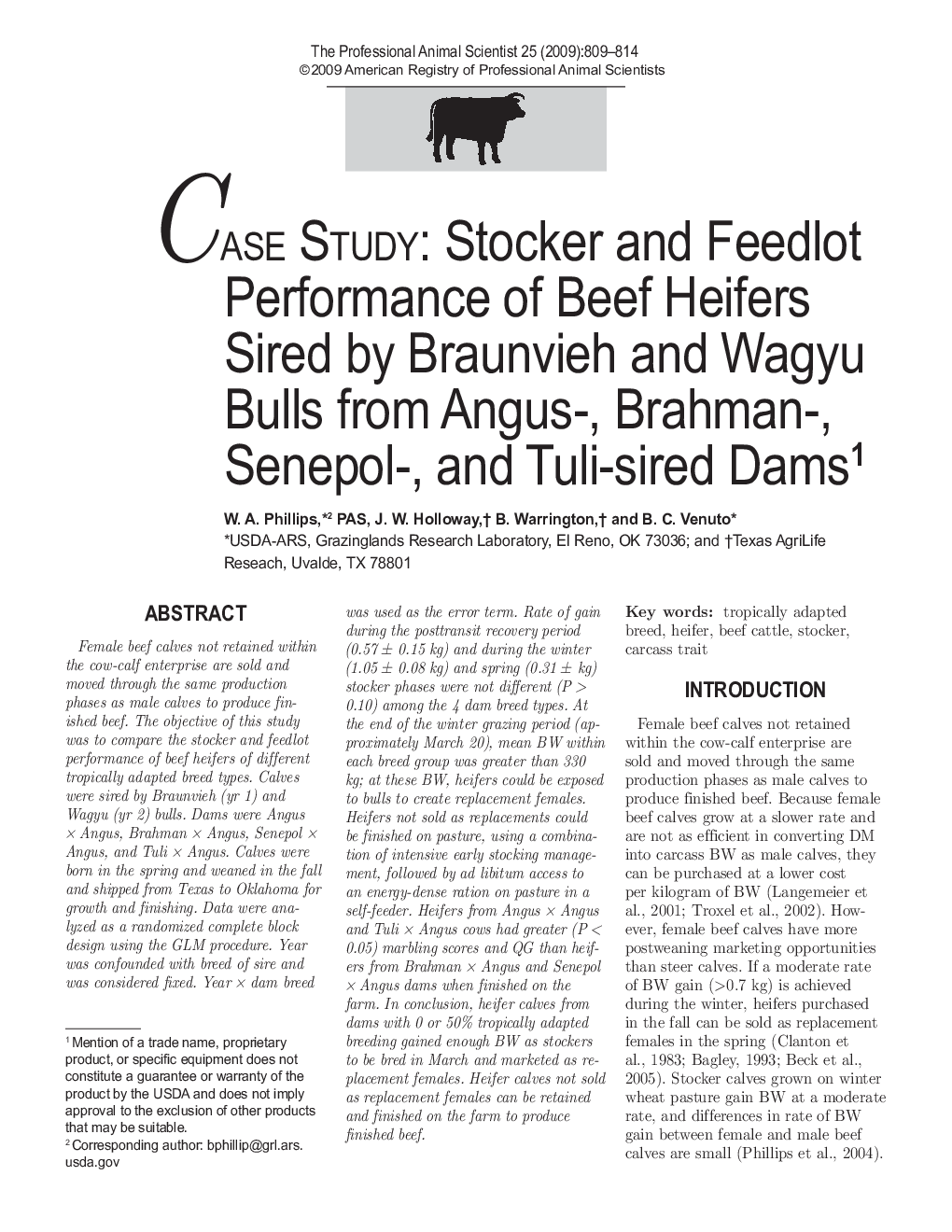| Article ID | Journal | Published Year | Pages | File Type |
|---|---|---|---|---|
| 2454452 | The Professional Animal Scientist | 2009 | 6 Pages |
Abstract
Female beef calves not retained within the cow-calf enterprise are sold and moved through the same production phases as male calves to produce finished beef. The objective of this study was to compare the stocker and feedlot performance of beef heifers of different tropically adapted breed types. Calves were sired by Braunvieh (yr 1) and Wagyu (yr 2) bulls. Dams were Angus à Angus, Brahman à Angus, Senepol à Angus, and Tuli à Angus. Calves were born in the spring and weaned in the fall and shipped from Texas to Oklahoma for growth and finishing. Data were analyzed as a randomized complete block design using the GLM procedure. Year was confounded with breed of sire and was considered fixed. Year à dam breed was used as the error term. Rate of gain during the posttransit recovery period (0.57 ± 0.15 kg) and during the winter (1.05 ± 0.08 kg) and spring (0.31 ± kg) stocker phases were not different (P > 0.10) among the 4 dam breed types. At the end of the winter grazing period (approximately March 20), mean BW within each breed group was greater than 330 kg; at these BW, heifers could be exposed to bulls to create replacement females. Heifers not sold as replacements could be finished on pasture, using a combination of intensive early stocking management, followed by ad libitum access to an energy-dense ration on pasture in a self-feeder. Heifers from Angus à Angus and Tuli à Angus cows had greater (P < 0.05) marbling scores and QG than heifers from Brahman à Angus and Senepol à Angus dams when finished on the farm. In conclusion, heifer calves from dams with 0 or 50% tropically adapted breeding gained enough BW as stockers to be bred in March and marketed as replacement females. Heifer calves not sold as replacement females can be retained and finished on the farm to produce finished beef.
Related Topics
Life Sciences
Agricultural and Biological Sciences
Animal Science and Zoology
Authors
W.A. PAS, J.W. Holloway, B. Warrington, B.C. Venuto,
